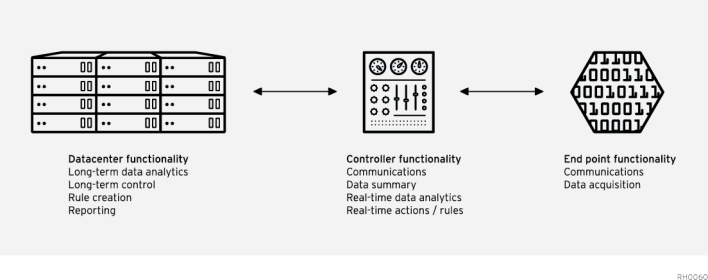"Many consumer-based IoT solutions are enabled by a two-tier architecture of direct device-to-server communication and data exchange. These architectures lack the ability to scale and address the time-critical nature of enterprise-class deployments, and do not address an enterprise’s concerns around bandwidth and latency. So, how can your intelligent architecture benefit from adding a controller tier?
- "Unlike consumer IoT, the enterprise bears transmission costs. An intelligent controller tier reduces the data required to be transmitted to the back-office, resulting in significant transmission savings.
- "Latency is a big issue when sub-second response times matter. By moving data processing up to a controller tier, analysis and response occur much more quickly.
- "Managing across unconnected network compartments is key. Most enterprise IoT systems contend with a variety of cell networks, NAT barriers, etc. Bridging these through controllers gains easier access to devices.
- "Bandwidth is another consideration. An intelligent controller tier monitors data thresholds and bandwidth availability, improving the flow of data to the back-office.
- "QoS and intelligent link selection are vital. With more than one viable network transport, the intelligent controller tier can decide what data flows on which paths, aiding overall efficiency.
- "Data summarization is important for optimal bandwidth utilization and cost management. The intelligent controller tier can batch or summarize data for use in the datacenter and can also store raw data for deeper queries.
"The benefits of adding an intelligent controller tier include speed, efficiency, ease of management, cost reduction, and ultimately, a successful IoT implementation. Learn more about a three-tier architecture for the Internet of Things and discover why Red Hat is the right partner for your enterprise IoT implementations at www.redhat.com/embedded."
Six reasons why enterprise IoT needs three tiers to succeed — Tech News and Analysis.
Last updated: February 7, 2024
